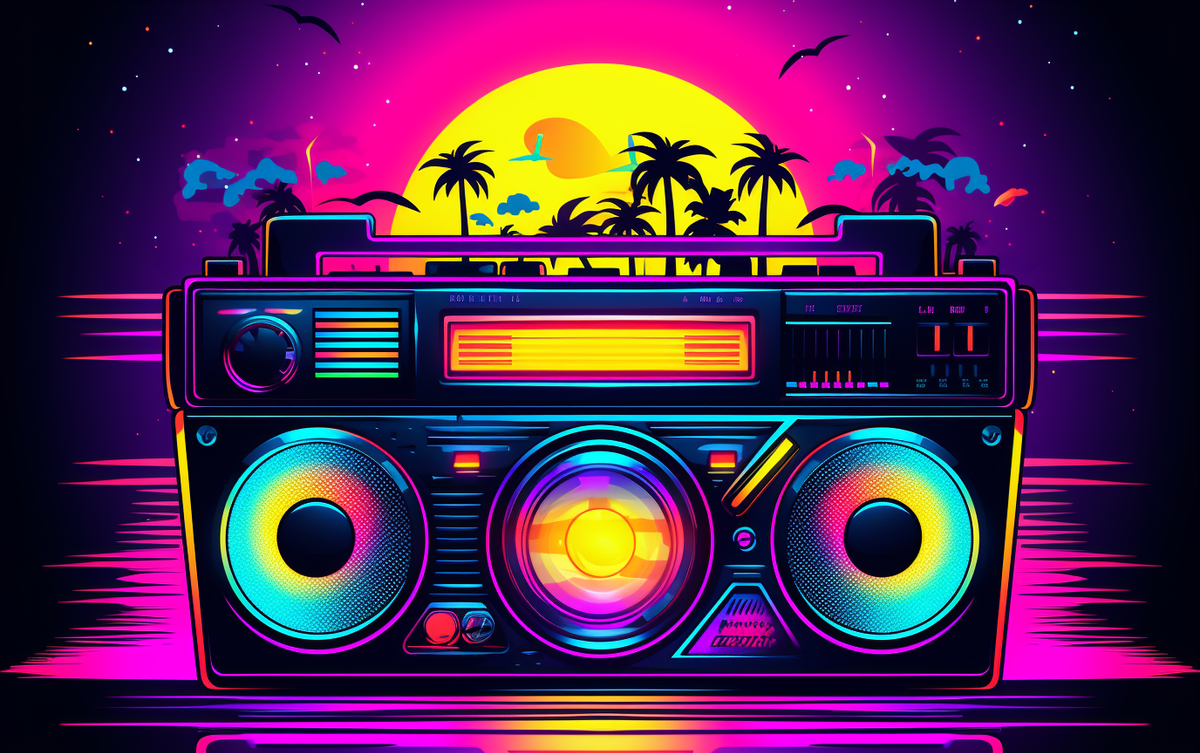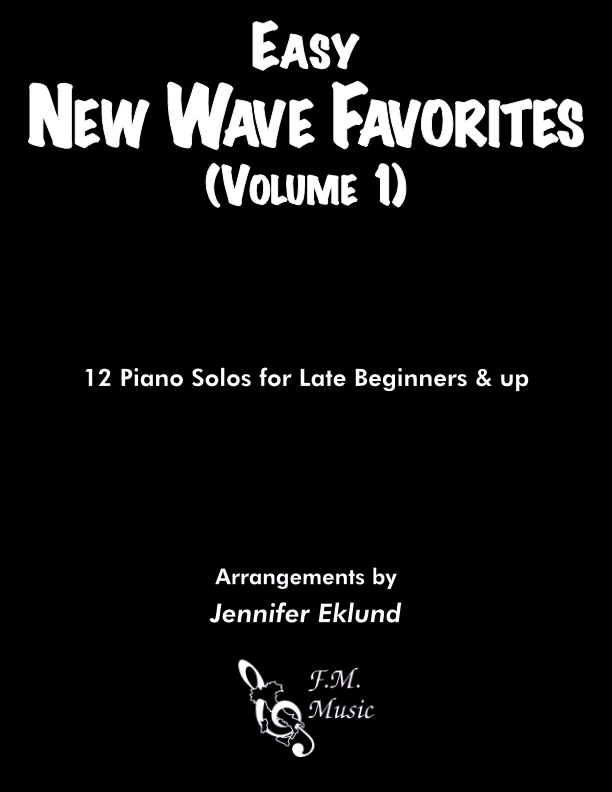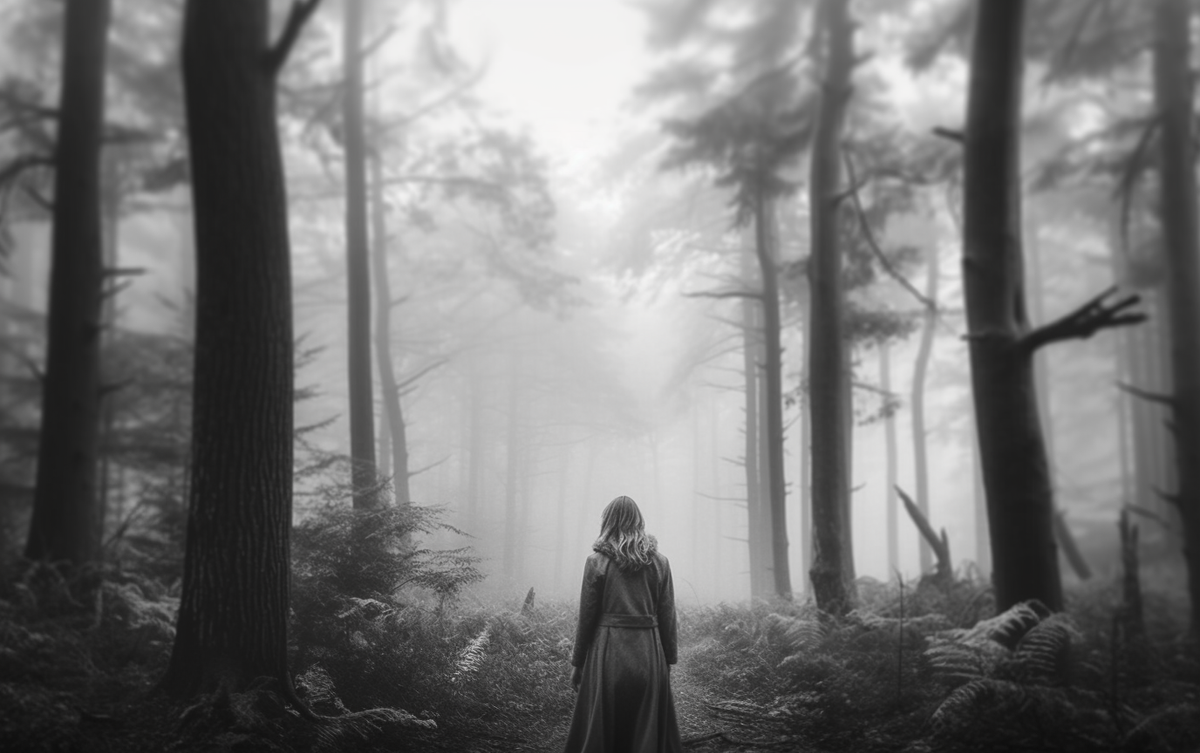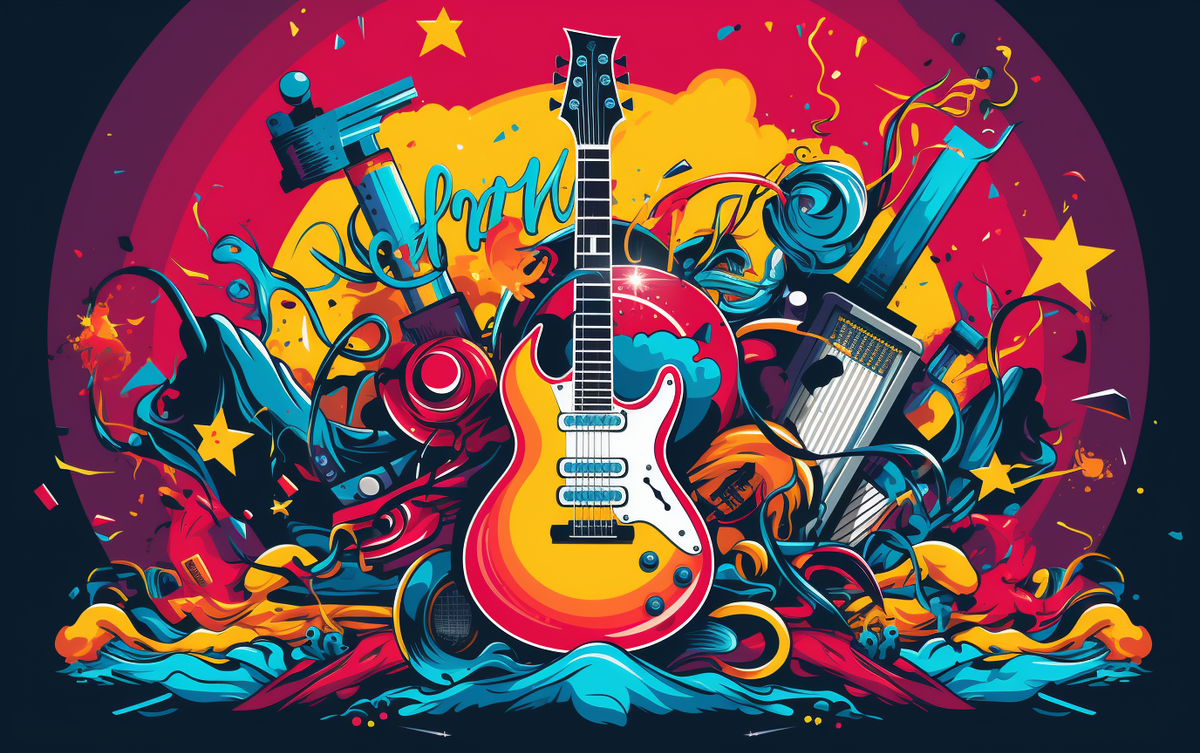🎹 What is New Wave music?
New Wave music spanned the late 1970s through the 1980s and emerged as a more melodic and light-hearted extension of punk culture. It embraced various pop-oriented styles and prominently featured the use of synthesizers. Initially a catch-all term for post-punk musical expressions, New Wave later evolved into a broader umbrella encompassing power pop, synth-pop, alternative dance, and milder forms of punk. It also can be perceived as a more accessible counterpart to post-punk.
Characterized by its distinctive attributes, New Wave music exhibited a playful and humorous pop sensibility, characterized by angular guitar riffs and unconventional rhythms, often enhanced by electronic elements, especially the use of synthesizers. A visually appealing fashion sense and distinctive music videos were crucial to the genre’s success. The movement’s roots lie in Britain, where British New Wave artists initially gained prominence and subsequently captured American audiences through platforms like MTV. The genre is sometimes referred to as the second British invasion.
New Wave’s initial peak occurred from the late 1970s to the early 1980s, supported by major musicians and a proliferation of one-hit wonders. MTV’s launch in 1981 played a pivotal role in amplifying the genre’s popularity by heavily featuring new wave acts. While New Wave experienced a decline in the mid-1980s due to the ascent of other genres, it has resurged intermittently since the 1990s, fueled by nostalgia for its influences. Additionally, new wave’s musical characteristics, including choppy rhythms, quirky pop sensibilities, and electronic incorporation, continue to have a lasting influence on subsequent generations of artists.
🎶 Easy New Wave Favorites: Volume 1 Songbook
The following songs are included in the Easy New Wave Favorites: Volume 1 songbook. These are all available as separate singles, but you get the most value by purchasing the whole collection. All of these arrangements are appropriate for late beginners and early intermediates.
- 867-5309/Jenny (Tommy Tutone)
- 99 Luftballons (Nena)
- Centerfold (J. Geils Band)
- Dancing with Myself (Billy Idol)
- Don’t You Want Me (The Human League)
- Down Under (Men at Work)
- Heart of Glass (Blondie)
- Hungry Like the Wolf (Duran Duran)
- Just Can’t Get Enough (Depeche Mode)
- My Sharona (The Knack)
- Our Lips Are Sealed (The Go-Go’s)
- Running Up That Hill (Kate Bush)
🎹 Watch a performance of the entire songbook:
⭐ Featured Favorites
There’s so many great videos from this era that it’s hard to narrow down the best ones, but these personal favorites from Easy New Wave Favorites: Volume 1! made the cut!
“867-5309/Jenny” (Tommy Tutone) (1981)
The most famous telephone number in history?
“867-5309/Jenny” is a song by Tommy Tutone released in 1981. It reached No. 4 on the Billboard Hot 100 chart in May 1982 and No. 1 on the Billboard Hot Mainstream Rock Tracks chart in April 1982. The song led to a trend of people calling the number 867-5309 and asking for “Jenny.” The song’s origins have different stories: one suggests that “Jenny” was based on a real girl’s number written on a bathroom wall, while another co-writer claims the name and number just came to him. The song’s popularity caused some phone number owners to face unwanted calls. Various businesses and individuals obtained the number for promotions or personal use. Legal battles and commercial uses of the number continued over the years, making it an iconic pop culture reference.
“Down Under” (Men at Work) (1981)
Vegemite salesmen of the decade!
“Down Under” is a hit song by the Australian rock band Men at Work, originally released in 1980 and later re-released in 1981 on their debut album “Business as Usual.” The song gained widespread popularity, topping charts in various countries. In Australia, it reached number one in 1981 and remained a well-loved patriotic tune, often played at sporting events. The lyrics tell the story of an Australian traveler encountering people interested in his homeland during his journeys. The song is infused with Australian slang and cultural references, including a mention of a Vegemite sandwich and allusions to drug use. Despite its upbeat melody, the song carries a deeper message about the commercialization and loss of the country’s spirit due to rampant development and greed.
The accompanying music video humorously portrays the lyrics’ narrative, featuring the band members in a Volkswagen Kombi van, engaging in various activities and encounters described in the song. The video was shot at the Cronulla sand dunes in Sydney, and it concludes with a symbolic scene of the band carrying a coffin across the dunes, representing the impending death of Australia’s identity due to excessive development and cultural influence. Overall, “Down Under” captures both the celebratory and cautionary aspects of Australia’s culture and challenges, making it a timeless anthem that resonates with audiences worldwide.
“Hungry Like the Wolf” (Duran Duran) (1982)
“Hungry Like the Wolf” is a song by the English new wave band Duran Duran, featured on their second studio album, “Rio” (1982). The song was released as a single in 1982 and became a significant hit for the band. It reached No. 5 on the UK Singles Chart and received a platinum certification from the British Phonographic Industry. The song’s music video, directed by Russell Mulcahy and filmed in Sri Lanka, played a crucial role in the band’s breakthrough in the United States, gaining heavy rotation on MTV. As a result, the single peaked at No. 3 on the Billboard Hot 100, helping Duran Duran achieve international fame. The music video even won the first-ever Grammy Award for Best Short Form Music Video in 1984.
The song’s creation took place in the basement studios of EMI’s London headquarters. Duran Duran’s members collaborated throughout a single day, crafting the track using a mix of electronic and guitar-driven elements. The lyrics were inspired by “Little Red Riding Hood” and featured repeating melodies from Gordon Lightfoot’s “If You Could Read My Mind.” The song’s upbeat and catchy composition blended electronic production with a driving guitar riff. The video, directed by Russell Mulcahy, showcased a cinematic jungle adventure narrative, ultimately propelling the band’s popularity and leading to their commercial success in the US. “Hungry Like the Wolf” remains one of Duran Duran’s most iconic and enduring hits.
“99 Luftballons” (Nena) (1983)
Sprechen sie Deutsch? Sorry, the English version sucks in comparison.
“99 Luftballons” is a song by the German band Nena, released in 1983. An English version titled “99 Red Balloons” was also released in 1984. The song is about the accidental triggering of a war due to the mistaken interpretation of 99 balloons as hostile objects on a radar system. The English version retains the same narrative but with some poetic translation. The band initially expressed disapproval of the English version. Both the German and English versions achieved chart success, with the German version topping charts in the US and Australia, and the English version topping charts in the UK, Canada, and Ireland. The music video was shot in a Dutch military training camp, featuring explosive effects. A viewer donated to a charity event to have both versions of the video played continuously for an hour on TV.
“Just Can’t Get Enough” (Depeche Mode) (1981)
Just can’t get enough synthesizers and New Wave classics like this one:
“Just Can’t Get Enough” is a synth-pop song by the English electronic music band Depeche Mode. Released as their third single in 1981, it preceded their debut album “Speak & Spell.” Written by founding member Vince Clarke, the song was recorded at Blackwing Studios and is characterized by its riff-driven synth melodies. It became the band’s first single to be released in the United States in 1982.
The song’s single version is the same as the one on the UK version of “Speak & Spell.” The 12-inch single featured a “Schizo Mix” with additional synth elements, creating a darker atmosphere. The B-side, “Any Second Now,” was the band’s first commercially available instrumental piece. There’s also a version with vocals, handled by Martin Gore. In the United States, the B-side is “Tora! Tora! Tora!” The single reached number 8 on the UK Singles Chart and number 26 on the US Hot Dance Club Play chart, becoming a significant hit in Australia as well.
The accompanying music video, directed by Clive Richardson, was the band’s first and includes scenes filmed at The Southbank Centre.



 - Easy/images/Cover--jenny-EZ-MN.png)
 - Intermediate/images/Cover--jenny-INT-MN.png)
 - Easy/images/Cover--downunder-EZ-MN.png)
 - Intermediate/images/Cover--downunder-INT-MN.png)
 - Easy/images/Cover--hungry-EZ-MN.png)
 - Intermediate/images/Cover--hungry-INT-MN.png)
 - Easy/images/Cover--luft-EZ-MN.png)
 - Intermediate/images/Cover--luft-INT-MN.png)
 - Easy/images/Cover--enough-EZ-MN.png)
 - Intermediate/images/Cover--enough-INT-MN.png)
 - Advanced/images/Cover--enough-ADV-MN.png)
 - Easy/images/Cover--candy-EZ-MN.png)
 - Easy Abridged/images/Cover--smalltownboy-ez-MN.png)
 - Intermediate/images/Cover--spinmeround-INT-MN.png)
 - Easy/images/Cover--planetearth-EZ-MN.png)
 - Easy/images/Cover--people-EZ-MN.png)




Be the first to comment.